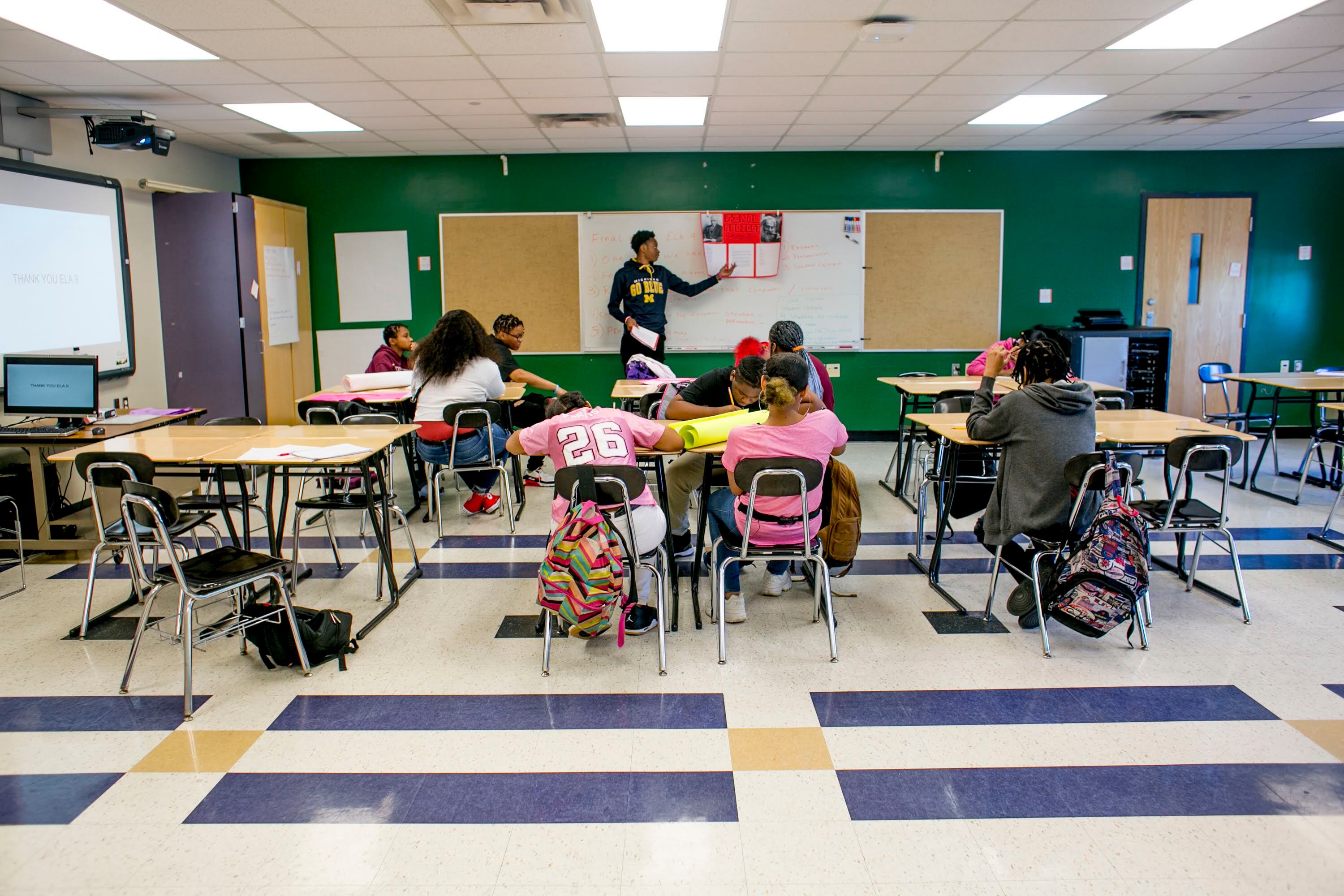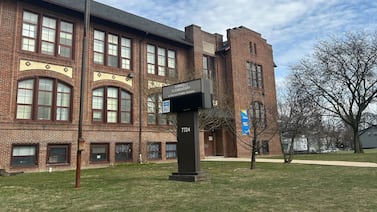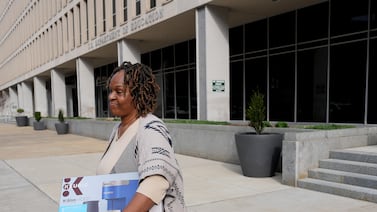Michigan’s Black teacher workforce declined 48% between 2005 and 2015, far outpacing overall declines in the size of the state’s educator corps, according to a new study from Michigan State University.
During that period, tens of thousands of African American students left distressed city districts in Michigan. Hundreds of schools shut down in Detroit alone, eliminating thousands of jobs historically held by Black teachers.
Many students moved to suburban districts with largely white teaching workforces, but those districts didn’t pick up the slack by hiring more Black teachers, the study says. During the same period, the number of African Americans entering traditional teacher training programs also fell.
Michigan’s urban school districts haven been hobbled by a lack of funding, said Pamela Pugh, an elected member of the Michigan Board of Education. Indeed, the study notes that increased student-teacher ratios in city districts — likely a result of underfunding — also helped shrink the state’s Black educator corps.
“Public education was purposefully dismantled, and what happens when you dismantle something?” she said. “Yeah, you’re going to have educators and students leaving.”
Michigan lost Black teachers even as their particular importance to schools became clear in a growing body of education research. The presence of a Black teacher in the classroom has been shown to contribute to higher test scores and better behavior for all students — and Black students especially.
“We did not have a large number of educators of color in the workforce to begin with, and to see such a substantial loss is very troubling,” said Leah Breen, director of the Office of Educator Excellence at the Michigan Department of Education.
Attrition among Black educators has been on the state’s radar for years: At last count, 17% of Michigan students were African American compared with only 7% of teachers.
That underrepresentation is worse than the U.S. average: About 15% of U.S students are African American versus 7% of public school teachers. The number of Black teachers nationwide has dropped by about 1% over the last two decades.
The new study, “Deurbanization and the Struggle to Sustain a Black Teaching Corps,” breaks new ground by drawing a connection between enrollment declines in Michigan city school districts and the Black teacher workforce.
The study draws on statewide data that track the movement of teachers and students. The researchers did not survey Black teachers to find out why so many left the education workforce.
Rod Wallace, a former Detroit teacher and a member of a state education department advisory group that focuses on diversity in the workforce, said African Americans remaining in Michigan classrooms can bear an extra burden precisely because they are rare.
“I think in many districts, the requirements for African American teachers to not only instruct but to be beacons of hope and access creates an inordinate burden of stress,” he said, adding that “it’s one we readily take on.”
Steve Drake, lead author of the study and a doctoral candidate at Michigan State University, said his research suggests that focusing on diversifying the teacher workforce outside of cities should be a priority.
“Policymakers and supporting institutions like universities and school districts must develop strategies to build sustainable pipelines of Black educators in all of the communities where Black students live and work every day — not just in urban centers,” he said.
The paper points to research showing that Black teachers are more likely to stay in schools where they have more Black colleagues.
Thousands of Black students enrolled in suburban Detroit districts in recent years, but teaching staffs in those districts remained overwhelmingly white.
Black student enrollment in the Warren Consolidated School District grew by more than 500 between 2006 and 2015, according to state data. During the same period, the number of Black teachers in the district fell from 8 to 5.
In Eastpointe, a district that became majority Black over the last decade amid an influx of new students, the teaching force was 2% African American in 2017.
“Our kids deserve to see themselves in the people that serve them,” said Christina Gibson, assistant superintendent for human resources in Eastpointe. She said the pandemic drove a wave of retirements that she hopes will diversify the district’s teaching staff, noting that 25% of applicants for the open positions are African-American.
Warren district officials didn’t immediately return a request for comment.
The state education department has mounted several efforts to attract and retain more African American educators, from encouraging students to return to their home districts as teachers to supporting alternative certification programs, which offer a fast track into the teaching profession.
Such programs have proved appealing to would-be educators who are Black at a time when the number of Black students entering traditional teacher prep programs has fallen. In Detroit, training programs for district support staff have already put dozens of people, many of them African American, into classrooms for the first time.
Researchers only used audited data, meaning they couldn’t get figures after the 2015-2016 school year. They noted, however, that the decline of Black teachers in Michigan may have leveled off in recent years. According to data from the Michigan Department of Education, there were 52 Black students for every Black teacher in Michigan in 2015. By 2019, that figure had fallen to 43.
But stark racial disparities remain: Statewide, there are 12 white students for every white teacher.
The study also notes that population declines in Michigan — with the corresponding reduction in the state’s teaching workforce — doesn’t account for the steep loss of Black educators. While the Black educator workforce fell 48%, the white teaching force shrank by 19% and the Latino teaching force grew by 6%.
Reversing the trend won’t be easy, but adults can start by encouraging Black students to become teachers, said Quan Neloms, a former Detroit teacher who is now a career counselor for Wayne RESA, the county education agency, in addition to serving on the state advisory committee on diversity in the education workforce and running an organization that aims to recruit Black men into teaching.
“African American teachers may not be getting introduced to teaching at an early age like some of their white counterparts,” he said.
“Just ask that question. Have you thought about being an educator? That’s what hooked me.”
Correction: A previous version of this story named the study’s lead author as Steve Beck. He is Steve Drake.







